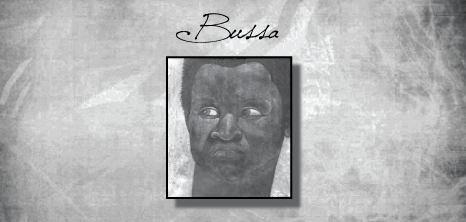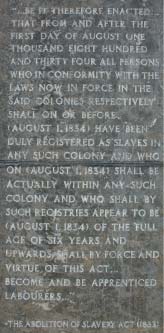|
Bussa (D. 1816)Not much is known of Bussa as slave owners were never really concerned about keeping detailed records about the lives of their slaves who essentially were considered their property. We do know however, that Bussa was born a free man in Africa but captured and brought to Barbados to work as a slave on Bayleys Plantation in St Philip.
|
|
|

 In 1985, the Emancipation Statue (commonly referred to by all Barbadians as "Bussa Statue) located at the St. Barnabas Roundabout, was unveiled to honor the 150th anniversary of emancipation and to symbolize the broken chains of slavery. The bronze statue was created by one of Barbados' most revered sculptors, Karl Broodhagen, who died at the age of 93 in 2002.
In 1985, the Emancipation Statue (commonly referred to by all Barbadians as "Bussa Statue) located at the St. Barnabas Roundabout, was unveiled to honor the 150th anniversary of emancipation and to symbolize the broken chains of slavery. The bronze statue was created by one of Barbados' most revered sculptors, Karl Broodhagen, who died at the age of 93 in 2002.
